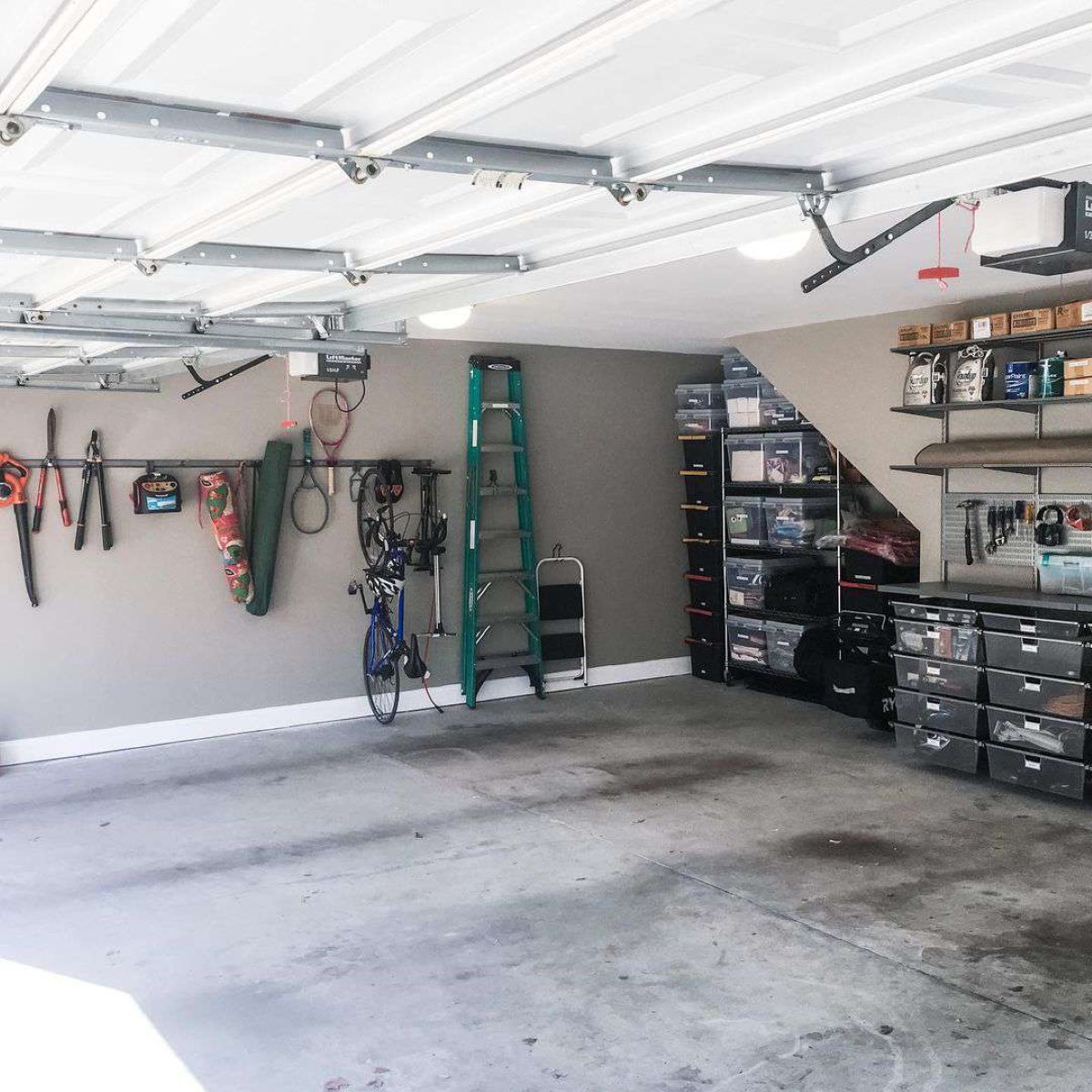

Articles
How To Store Extension Ladder
Modified: January 9, 2024
Learn the best way to store your extension ladder with these helpful articles. Keep your ladder safe and out of the way when not in use.
(Many of the links in this article redirect to a specific reviewed product. Your purchase of these products through affiliate links helps to generate commission for Storables.com, at no extra cost. Learn more)
Introduction
Extension ladders are a valuable tool for homeowners and professionals alike. They allow you to reach high places and complete tasks that would otherwise be difficult or impossible. But when it comes to storing these ladders, many people find themselves scratching their heads. The long and bulky nature of extension ladders can make them challenging to store efficiently and safely.
This article aims to provide you with some practical tips and ideas on how to store your extension ladder properly. By following these guidelines, you can ensure the longevity of your ladder and create a clutter-free storage space.
Before we delve into the storage methods, it is essential to emphasize the importance of safety. When working with extension ladders, always prioritize safety measures to prevent accidents or injuries. This includes wearing appropriate safety gear, inspecting the ladder for any damages or defects, and following the manufacturer’s instructions for usage.
Now, let’s explore some effective storage options for your extension ladder.
Key Takeaways:
- Properly storing your extension ladder is crucial for safety and longevity. Prioritize safety by inspecting, cleaning, and securing the ladder, and choose a suitable storage location to maximize space efficiency.
- Consider vertical, wall-mounted, or ceiling storage options for your ladder, and use ladder hooks, brackets, or alternative storage ideas to keep it organized and easily accessible. Prioritize stability and safety to ensure long-term functionality.
Read more: How To Store Ladders
Safety Precautions
Before storing your extension ladder, it’s crucial to take some safety precautions to ensure the well-being of yourself and others. Here are some essential safety tips to keep in mind:
- Inspect the ladder: Before storing your ladder, thoroughly inspect it for any signs of damage or wear and tear. Check for bent or broken rungs, loose or missing screws, or any other structural issues that may compromise its safety. If you notice any damage, repair or replace the ladder before storing.
- Clean the ladder: Remove any dirt, debris, or mud from the ladder to prevent buildup and potential damage. Use a brush or a damp cloth to wipe down each rung and the ladder frame. Cleaning the ladder will help maintain its integrity and ensure smooth operation when it’s time to use it again.
- Secure the ladder: Make sure the ladder is stable and secure before storing it. Lock the ladder in its extended position, and if possible, secure it to a stable surface or structure to prevent it from collapsing or sliding. This is especially important if you’re storing the ladder vertically against a wall or on a ceiling rack.
- Protect the ladder: Consider investing in ladder accessories such as padding or rubber caps to protect the ladder and prevent any damage to the floor or walls while in storage. These accessories can help minimize scratches, dents, or marks on the ladder and surrounding surfaces.
- Keep it out of reach: Ensure that your stored ladder is inaccessible to children or unauthorized individuals. If possible, lock the storage area or place the ladder in a room or space that is off-limits to others. This will help prevent accidents or injuries caused by tampering or misuse of the ladder.
By following these safety precautions, you can minimize the risk of accidents or damage while storing your extension ladder. Remember, safety should always be a top priority when handling any type of equipment.
Clean and Inspect the Ladder
Before storing your extension ladder, it’s essential to give it a thorough cleaning and inspection. This will help maintain its condition and ensure its safety when you need to use it again. Follow these steps to clean and inspect your ladder:
- Remove debris: Start by removing any dirt, dust, or debris from the ladder. Use a broom or brush to sweep away loose particles, and use a damp cloth to wipe down the rungs and rails.
- Check for damage: Inspect the ladder for any signs of damage or wear and tear. Look for bent or broken rungs, loose or missing screws, or any other issues that could compromise the ladder’s structural integrity.
- Repair or replace: If you identify any damage, it’s important to address it before storing the ladder. Repair or replace any broken or damaged parts to ensure the ladder is in proper working condition.
- Tighten loose screws: Check for any loose screws or bolts and tighten them as necessary. Loose connections can affect the stability and safety of the ladder, so make sure everything is securely fastened.
- Lubricate moving parts: If your ladder has any movable parts or mechanisms, such as extension locks or hinges, apply a lubricant to ensure smooth operation. This will help prevent rust and keep the ladder functioning properly.
- Protect against rust: If your ladder has any exposed metal parts, apply a protective coating or rust inhibitor to prevent corrosion during storage. This is especially important if you plan to store the ladder in a damp or humid area.
By cleaning and inspecting your ladder before storing it, you can identify and address any potential safety issues. This will help prolong the lifespan of your ladder and ensure that it’s ready for use whenever you need it.
Choose a Suitable Storage Location
Once you have cleaned and inspected your extension ladder, the next step is to choose a suitable storage location. Here are some factors to consider when selecting the ideal spot:
- Accessibility: Choose a location that provides easy access to the ladder when you need it. Avoid placing it in areas that are obstructed by furniture or other items, as this can make retrieval difficult.
- Space availability: Take into account the size of your ladder and ensure that you have enough space to store it comfortably. Consider whether the storage area is wide enough to accommodate the ladder’s width and tall enough for its length.
- Climate control: If possible, opt for a storage area that has proper climate control. Extreme temperatures, high humidity, or excessive moisture can damage the ladder over time. If such conditions are unavoidable, consider using a dehumidifier or moisture-absorbing products to protect the ladder.
- Protection from elements: It’s important to store your ladder in a location that provides protection from the elements. Exposure to direct sunlight, rain, or snow can cause the ladder to deteriorate more quickly. If you don’t have an indoor storage option, consider using a weatherproof cover to shield the ladder from external elements.
- Weight capacity: Ensure that the chosen storage area has sufficient weight capacity to support the ladder. Extension ladders can be heavy, so consider the stability of the floor or wall where you plan to store it. Reinforce the area if needed to prevent any accidents or damage.
- Safety considerations: Take into account the safety of the storage space. Avoid storing the ladder in areas where it could become a tripping hazard or pose a risk of falling on someone. Keep it away from high-traffic areas, staircases, or doorways.
Considering these factors will help you choose the most suitable storage location for your extension ladder. Whether it’s a garage, shed, or designated storage room, selecting the right spot will ensure your ladder remains safe, protected, and easily accessible for future use.
Vertical Storage Options
Storing your extension ladder vertically is an excellent space-saving solution, especially if you have limited storage space. Here are a few vertical storage options you can consider:
- Ladder stand: A ladder stand or rack is specifically designed for vertical ladder storage. It typically consists of two vertical brackets that hold the ladder securely in place. Install the ladder stand against a wall or in a corner, ensuring that it is stable and can support the ladder’s weight.
- Ladder hook: A ladder hook is a simple and cost-effective option for vertical ladder storage. It is typically a metal hook that you can mount on a wall or a beam. Hang the ladder on the hook by its rungs or rails, ensuring that it is properly supported and won’t slip off.
- Ladder wall brackets: Ladder wall brackets are similar to ladder hooks, but they offer more stability and support. Install the brackets on the wall securely and place the ladder on top, making sure it rests against the brackets. This option is ideal for longer extension ladders.
- Ladder leaning against the wall: If you don’t have any specific ladder storage equipment, simply lean the ladder vertically against a wall. Make sure it is secure and stable by positioning the bottom of the ladder against a sturdy surface or using a ladder stabilizer at the top to prevent it from sliding.
- Ladder pulley system: For ultimate convenience, you can install a ladder pulley system. This allows you to hoist the ladder up and down using a rope and pulley, making storage and retrieval a breeze. Ensure that the pulley system is properly installed and can handle the weight of the ladder.
When storing your ladder vertically, always secure it properly to prevent accidental falls or damage. Use straps or bungee cords to tie the ladder to the brackets or hooks, ensuring that it cannot be easily knocked over or dislodged. Additionally, consider using padding or rubber caps to protect the ladder and the wall from scratches or marks.
Remember to carefully measure the height and width of the space where you plan to store the ladder vertically to ensure it fits properly. By utilizing vertical storage options, you can maximize your storage space and keep your extension ladder neatly organized and easily accessible.
Read more: How To Store A Ladder
Wall Mounting Solutions
If you prefer to keep your extension ladder off the floor and utilize wall space for storage, there are various wall mounting solutions available. These options provide a secure and organized way to store your ladder. Here are some popular wall mounting solutions:
- Ladder brackets: Ladder brackets are specifically designed to hold extension ladders securely against a wall. Made of sturdy metal or heavy-duty plastic, these brackets feature a curved design that cradles the ladder’s rails. Install the brackets at an appropriate height on the wall, ensuring they are securely attached to the studs for maximum stability.
- Wall-mounted ladder hangers: Ladder hangers are hooks or brackets that you attach to the wall, allowing you to hang the ladder by its rungs. These hangers come in different styles, such as single hooks or multi-hook racks, and can support the weight of your ladder securely.
- Retractable rack systems: Retractable rack systems are a convenient option if you want to store your ladder flush against the wall. These systems consist of mounting brackets that hold the ladder, which can be easily extended and retracted as needed. With this solution, you can save space and keep your ladder neatly stored when not in use.
- Pegboard storage: If you prefer a more flexible storage option, consider utilizing pegboard. Mount a sheet of pegboard on the wall and use hooks or pegs to hang the ladder by its rungs. Pegboard allows you to customize the arrangement and easily adjust the hooks to accommodate different ladder sizes or configurations.
- Custom-built storage rack: For those with specific storage needs, a custom-built storage rack may be the best solution. This option allows you to design a wall-mounted rack tailored to your ladder’s dimensions and your available space. You can incorporate features such as adjustable brackets, additional storage for ladder accessories, or even a locking mechanism for added security.
Regardless of the wall mounting solution you choose, make sure to install it correctly and securely. Use appropriate hardware and follow the manufacturer’s instructions for proper installation. It’s important to ensure that the wall can support the weight of the ladder and that the mounting solution is strong and stable.
Wall-mounted storage solutions not only help keep your extension ladder off the ground but also free up valuable floor space. This can create a safer and more organized environment in your storage area, allowing for easy access to your ladder whenever you need it.
When storing an extension ladder, make sure to clean it thoroughly to remove any dirt or debris. Then, store it in a dry, well-ventilated area to prevent rust and damage. Use ladder hooks or a wall-mounted rack to keep it off the ground and out of the way.
Ceiling Storage Methods
If you have limited wall space or prefer to keep your floors clear, utilizing ceiling storage for your extension ladder can be a practical solution. Here are some effective methods for storing your ladder on the ceiling:
- Ceiling-mounted hoist systems: Ceiling-mounted hoist systems are an excellent option for overhead ladder storage. These systems typically consist of a pulley system, ropes or cables, and brackets that mount to the ceiling. You can lift the ladder off the ground and secure it to the hoist, using the pulley to easily raise and lower the ladder as needed.
- Overhead storage racks: Overhead storage racks are sturdy metal or wooden racks that you can mount to the ceiling. These racks provide a platform for you to store your ladder horizontally. Make sure to measure your ladder’s dimensions and select a rack that can accommodate its length and width securely.
- Ceiling hooks: Ceiling hooks are a simple and cost-effective option for ladder storage. You can install heavy-duty hooks directly into the ceiling joists and hang your ladder by its rungs. Ensure that the hooks are securely fastened and positioned in a way that evenly distributes the ladder’s weight.
- Pulley and strap system: If you prefer a DIY approach, you can create a pulley and strap system to lift your ladder onto the ceiling. Loop straps around the ladder and attach them to a pulley system secured to the ceiling. By pulling on the ropes, you can lift the ladder off the ground and secure it against the ceiling.
- Motorized ceiling storage systems: For added convenience and ease of use, you may consider motorized ceiling storage systems. These systems feature an electric motor that lifts and lowers the ladder with the push of a button. Motorized systems are ideal for heavy ladders or individuals who may have difficulty manually lifting the ladder.
When installing ceiling storage for your ladder, it is crucial to ensure the integrity and weight-bearing capacity of your ceiling structure. Consult a professional if you have any doubts about the ceiling’s strength or need assistance with the installation.
Ceiling storage methods free up floor and wall space, allowing you to utilize your storage area more efficiently. They also keep your ladder safely out of the way while still easily accessible when needed.
Using Ladder Hooks or Brackets
Ladder hooks or brackets are a popular and effective solution for storing your extension ladder. They provide a secure and organized way to hang your ladder, keeping it off the floor and easily accessible. Here are some steps to follow when using ladder hooks or brackets:
- Select the appropriate hooks or brackets: There are various types of ladder hooks or brackets available, so choose the one that best suits your ladder and storage space. Consider factors such as the weight capacity, material, and design of the hooks or brackets.
- Locate the studs or supporting structure: It’s essential to mount the hooks or brackets into the wall studs or a solid supporting structure. Use a stud finder to locate the studs behind the wall or ceiling, and mark their positions.
- Measure and mark the installation points: Determine the appropriate spacing and height for the hooks or brackets based on your ladder’s length and your desired storage layout. Use a level to ensure accuracy and mark the installation points on the wall or ceiling.
- Install the hooks or brackets: Using the marked points as a guide, mount the hooks or brackets onto the wall or ceiling. Use suitable screws or bolts that are appropriate for the type of surface. Ensure they are securely fastened and can support the weight of your ladder.
- Hang the ladder: Carefully lift the ladder and position it onto the hooks or brackets. Ensure that the ladder is evenly supported and securely resting on the hooks or brackets. Double-check for stability and make any necessary adjustments.
- Secure the ladder: To prevent the ladder from accidentally falling or being knocked off, consider using additional security measures. You can use straps or bungee cords to secure the ladder to the hooks or brackets. This will provide added stability and peace of mind.
When using ladder hooks or brackets, make sure to follow the manufacturer’s instructions for installation and weight capacity. It’s important to remember that the wall or ceiling structure must be strong enough to support the ladder’s weight. If you are unsure about the installation process or the ladder’s weight, consult a professional for guidance.
Using ladder hooks or brackets is a simple and effective storage solution that helps keep your ladder organized and easily accessible. By properly installing and securing your ladder, you can ensure safe and efficient storage for years to come.
Securing the Ladder for Added Stability
When it comes to storing your extension ladder, it’s essential to prioritize safety and ensure that it is securely positioned to prevent accidents or damage. Here are some tips for securing your ladder for added stability:
- Use ladder stabilizers: Ladder stabilizers are attachments that you can install at the top of the ladder. They provide a wider base of support and help prevent the ladder from tipping. Stabilizers are especially useful when leaning the ladder against a wall or using it on uneven surfaces.
- Attach ladder anti-slip devices: Anti-slip devices, such as rubber caps or grip pads, can be added to the ladder feet to enhance stability and prevent slipping. These attachments provide better traction on various surfaces, reducing the risk of accidents while the ladder is in storage.
- Secure the ladder against movement: Depending on the storage method you choose, it’s important to ensure that the ladder is immobilized and cannot shift or slide unexpectedly. You can use straps, bungee cords, or Velcro wraps to secure the ladder to hooks, brackets, or storage racks, keeping it firmly in place.
- Distribute the ladder’s weight: When storing your ladder horizontally or vertically, distribute its weight evenly across the support points. This will help maintain the ladder’s balance and prevent excessive strain on specific areas. Avoid concentrating the weight in one spot, as it may lead to deformation or damage over time.
- Consider weight limitations: Take into account the weight limitations of the storage racks, hooks, or brackets you are using. Ensure that they can safely support the weight of your ladder. Exceeding weight limits may compromise the stability and integrity of the storage system.
By implementing these precautions, you can enhance the stability of your ladder while it is in storage. It’s important to regularly check the stability and security of your ladder storage setup to ensure that it remains safe and intact.
Additionally, always follow the manufacturer’s guidelines and recommendations for storing your specific ladder model. Different ladders may have unique requirements for stability and storage, so be sure to consult the instruction manual or contact the manufacturer if you have any doubts or questions.
Remember, securing your ladder properly not only helps prevent accidents but also preserves the longevity and functionality of the ladder, ensuring that it remains in excellent condition for future use.
Read more: How To Store Ladders Outside
Alternative Storage Ideas
While ladder hooks, brackets, and racks are popular storage methods, there are also alternative solutions that can meet your specific storage needs. Here are some alternative storage ideas for your extension ladder:
- Freestanding storage racks: Freestanding storage racks provide a convenient and portable option for ladder storage. These racks are designed with vertical or horizontal supports that securely hold the ladder in place. They can be moved around as needed and are ideal for garages or areas where wall or ceiling mounting is not possible.
- Ladder storage bags or cases: Ladder storage bags or cases are specially designed to protect and store your ladder. These bags feature durable materials, handles, and sometimes wheels for easy transport. They provide a compact and organized storage solution, protecting the ladder from dust, dirt, and possible damage while in storage.
- Overhead ceiling storage: If you have high ceilings, consider using overhead storage platforms to keep your ladder suspended from the ceiling. These platforms are generally made of heavy-duty metal or wood and are installed between ceiling joists. With the ladder secured to the platform, it can be easily lowered or raised as needed.
- Under-deck storage: If you have a raised deck or patio, you can utilize the space underneath for ladder storage. Build a secure storage area, either closed or with removable panels, to house the ladder when it’s not in use. This option keeps the ladder out of sight and protected from the elements.
- Custom storage solutions: If you have specific storage requirements or unique space limitations, consider custom-built storage solutions. Consult with a professional carpenter or storage specialist who can design and build a customized storage system that fits your ladder and storage space perfectly.
When exploring alternative storage ideas, it’s important to prioritize safety and ensure that the storage method can securely hold and protect the ladder. Consider factors such as weight capacity, ease of access, and any additional safety features required for the specific storage solution.
Remember, the goal is to find a storage option that maximizes space efficiency, protects the ladder, and allows for easy retrieval when needed. By thinking outside the box and considering alternative storage ideas, you can find a solution that suits your preferences and storage requirements.
Conclusion
Storing your extension ladder properly is essential to maintain its integrity, prolong its lifespan, and create a safe storage environment. By following the tips and ideas outlined in this article, you can efficiently store your ladder while maximizing available space.
Before storing your ladder, remember to prioritize safety by inspecting it for any damage or wear and tear. Clean the ladder thoroughly to remove dirt and debris, and consider using ladder accessories for added protection.
Choose a suitable storage location that provides easy access, sufficient space, and protection from the elements. Whether storing your ladder vertically against a wall, utilizing wall-mounted solutions, opting for ceiling storage, or exploring alternative storage ideas, ensure that the ladder is secure and stable.
Consider using ladder hooks, brackets, racks, or even custom storage solutions to organize and store your ladder effectively. Secure the ladder with straps, bungee cords, or other means to prevent movement and ensure stability.
Lastly, don’t be afraid to explore alternative storage options such as freestanding racks, storage bags or cases, overhead ceiling storage, or under-deck storage, depending on your specific requirements and available space.
In conclusion, by following proper storage practices and making safety a priority, you can prolong the life of your extension ladder and create a clutter-free storage area. Take the time to choose the right storage method for your specific needs, and regularly inspect and maintain the ladder to ensure its safety and functionality for years to come.
Frequently Asked Questions about How To Store Extension Ladder
Was this page helpful?
At Storables.com, we guarantee accurate and reliable information. Our content, validated by Expert Board Contributors, is crafted following stringent Editorial Policies. We're committed to providing you with well-researched, expert-backed insights for all your informational needs.
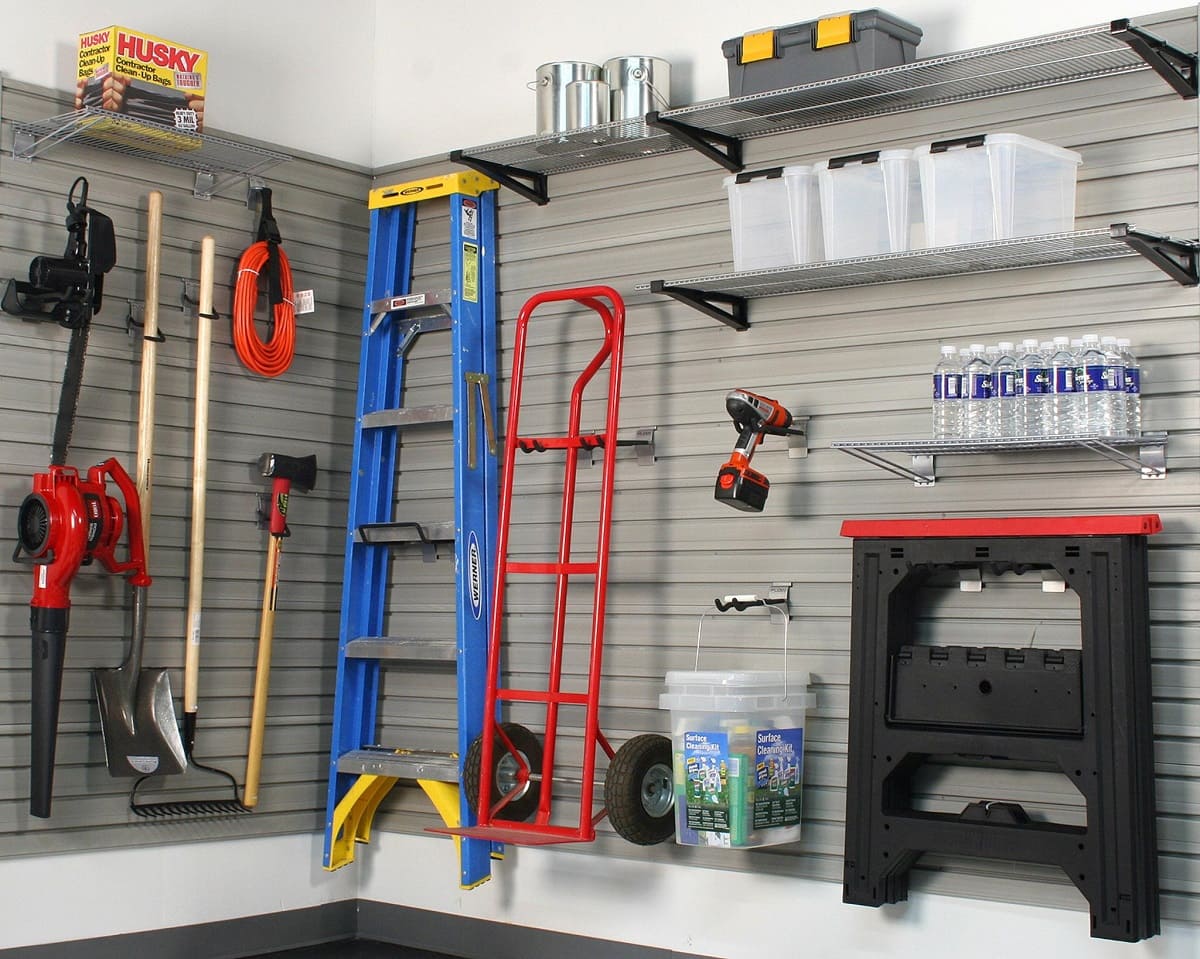
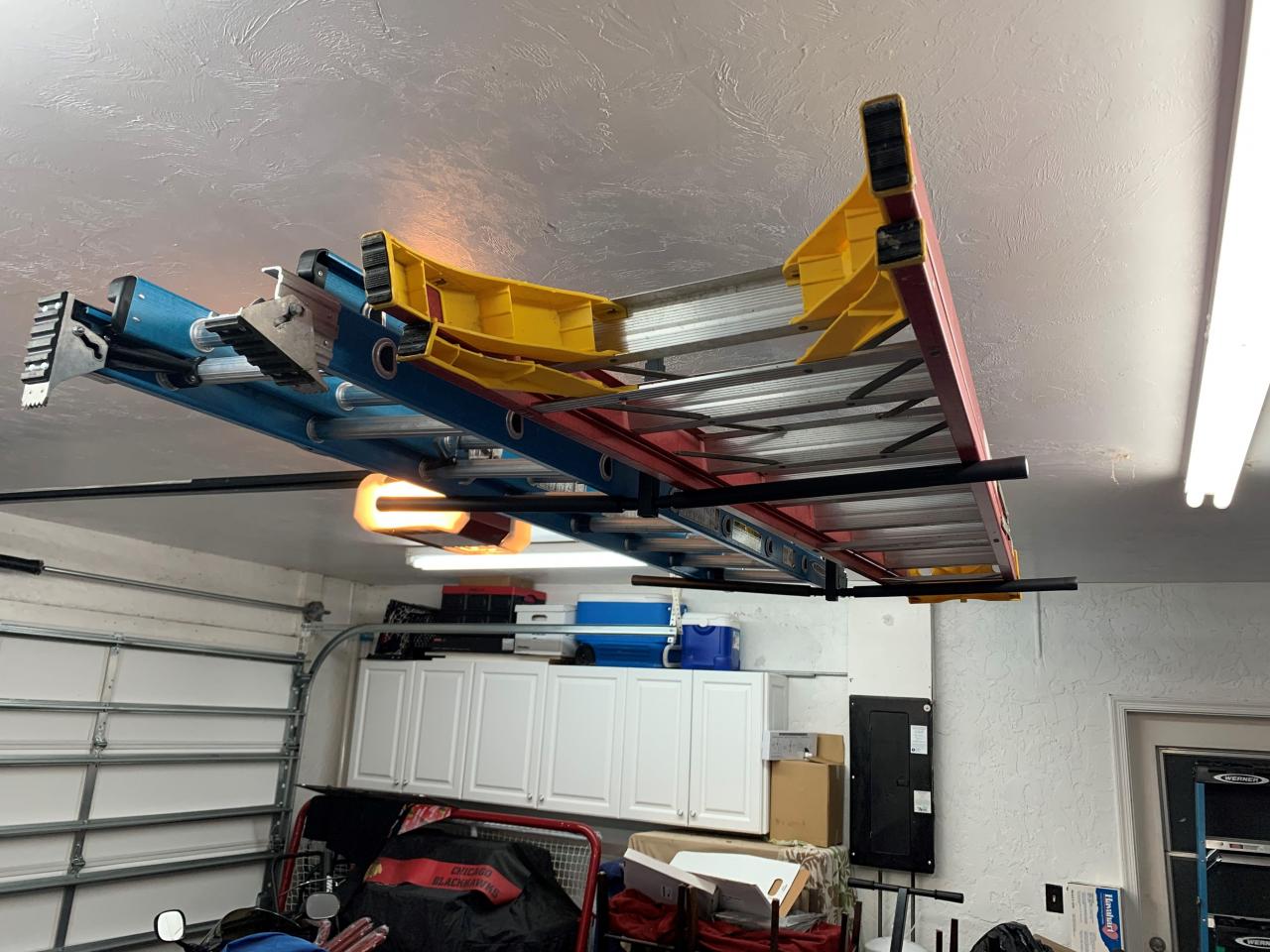
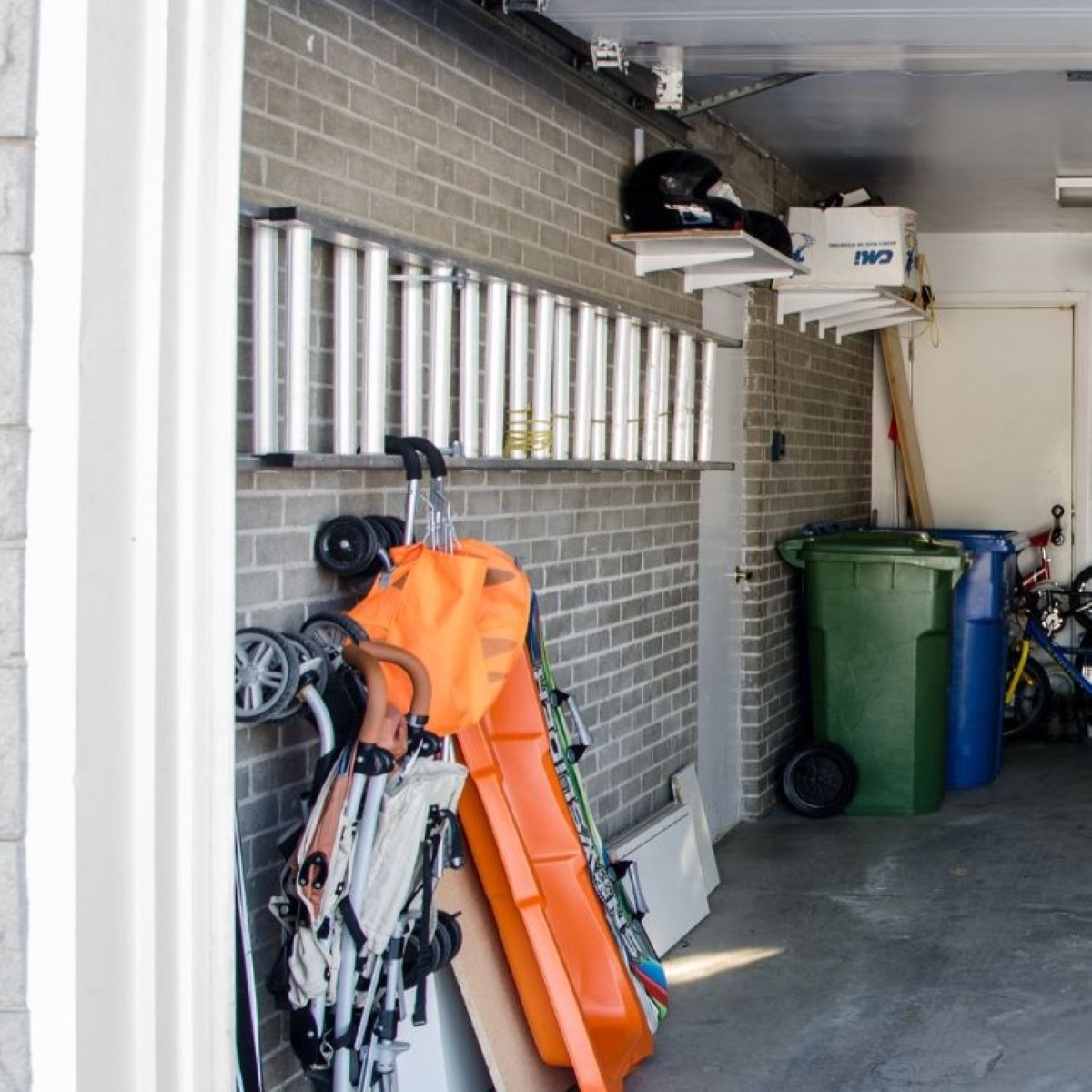
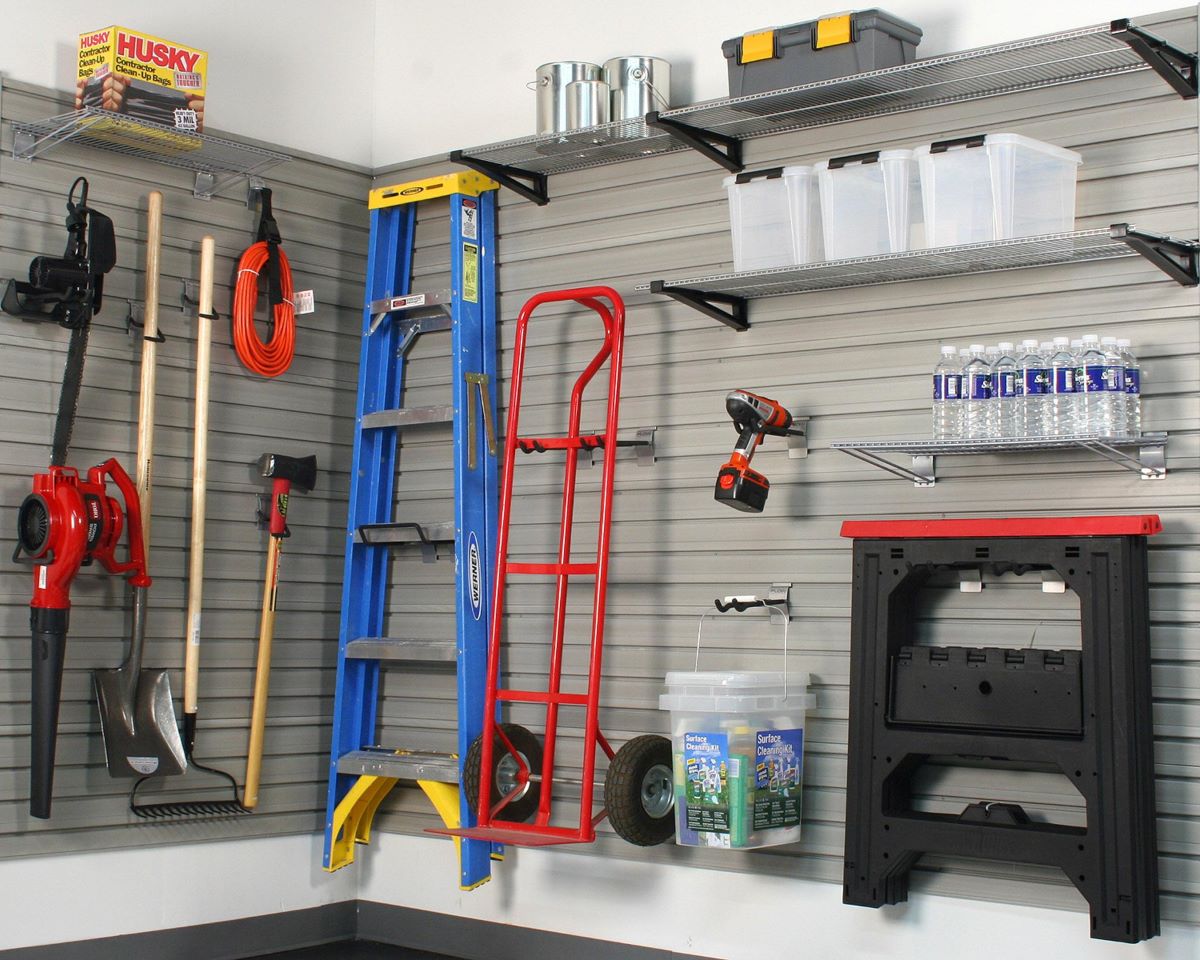
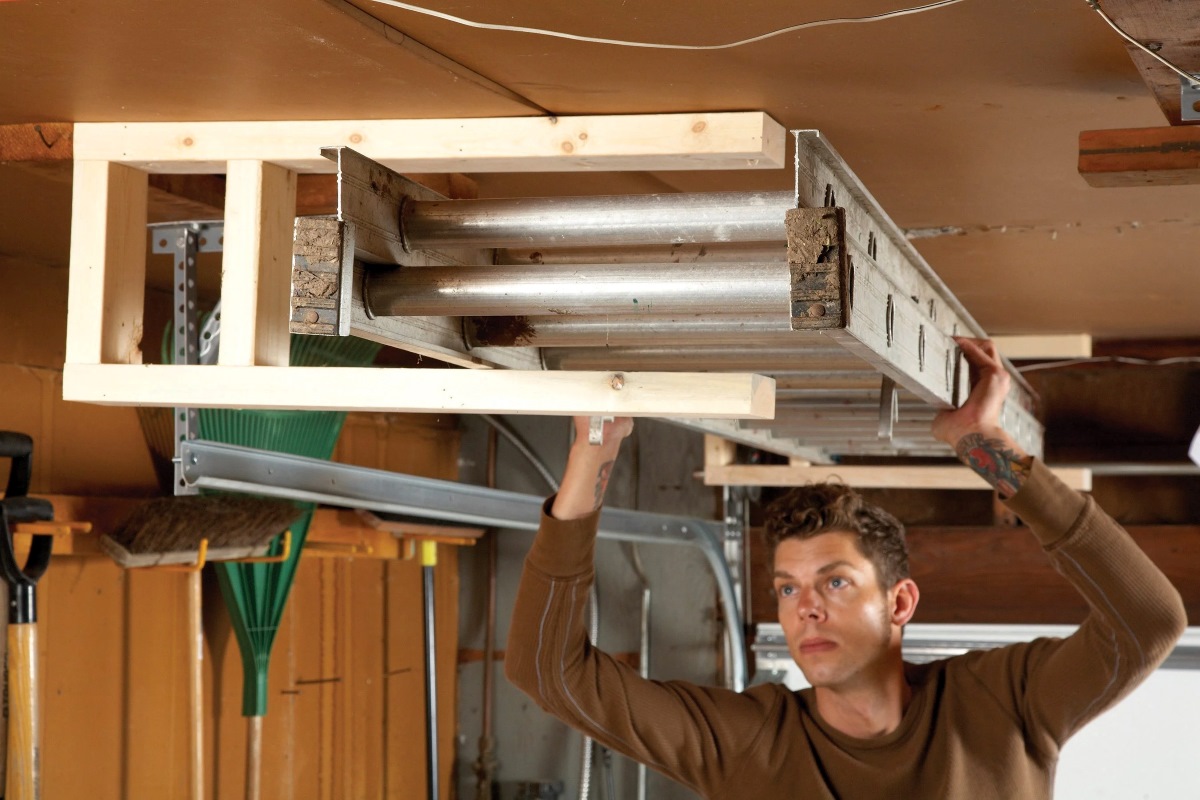
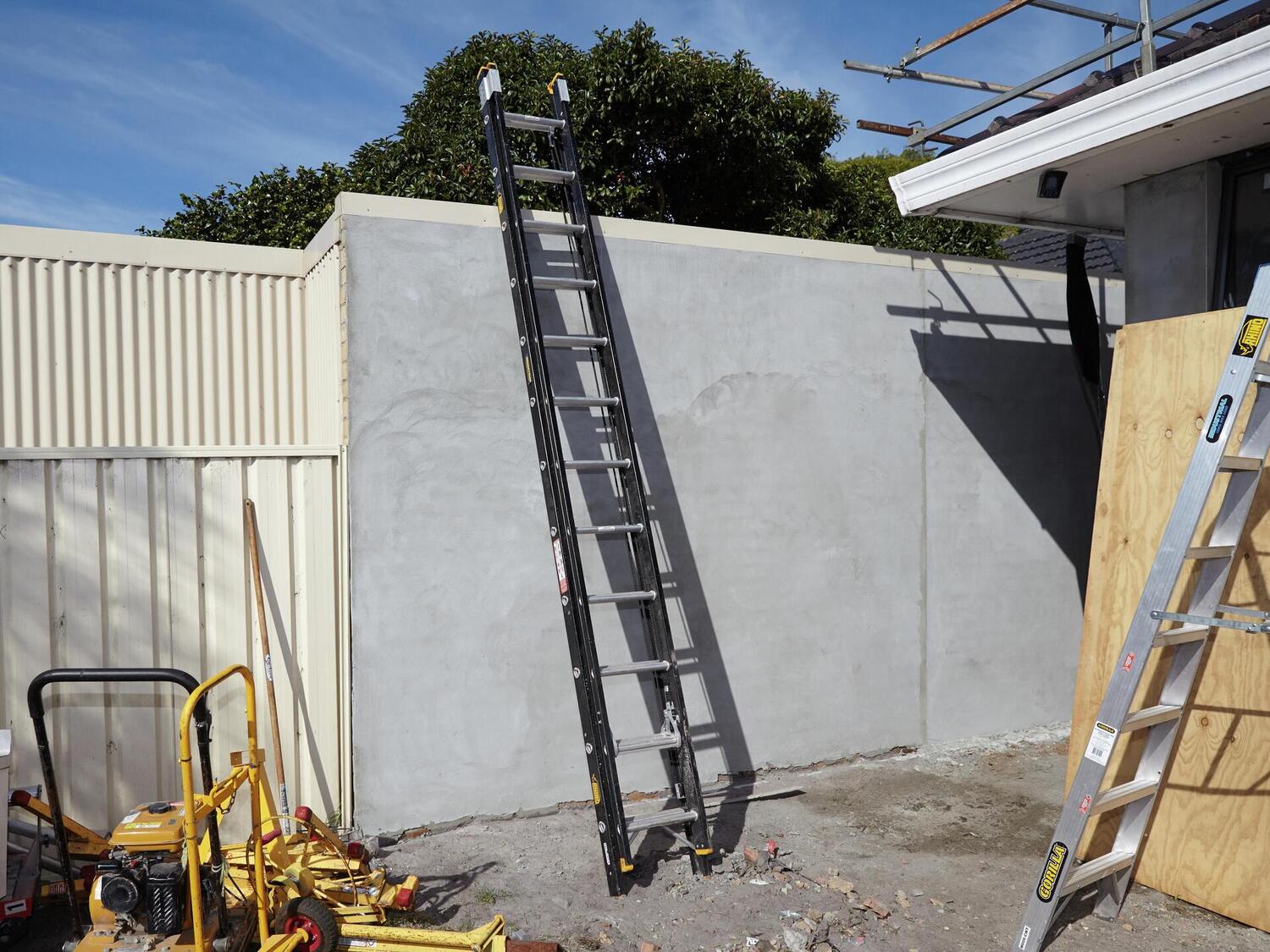
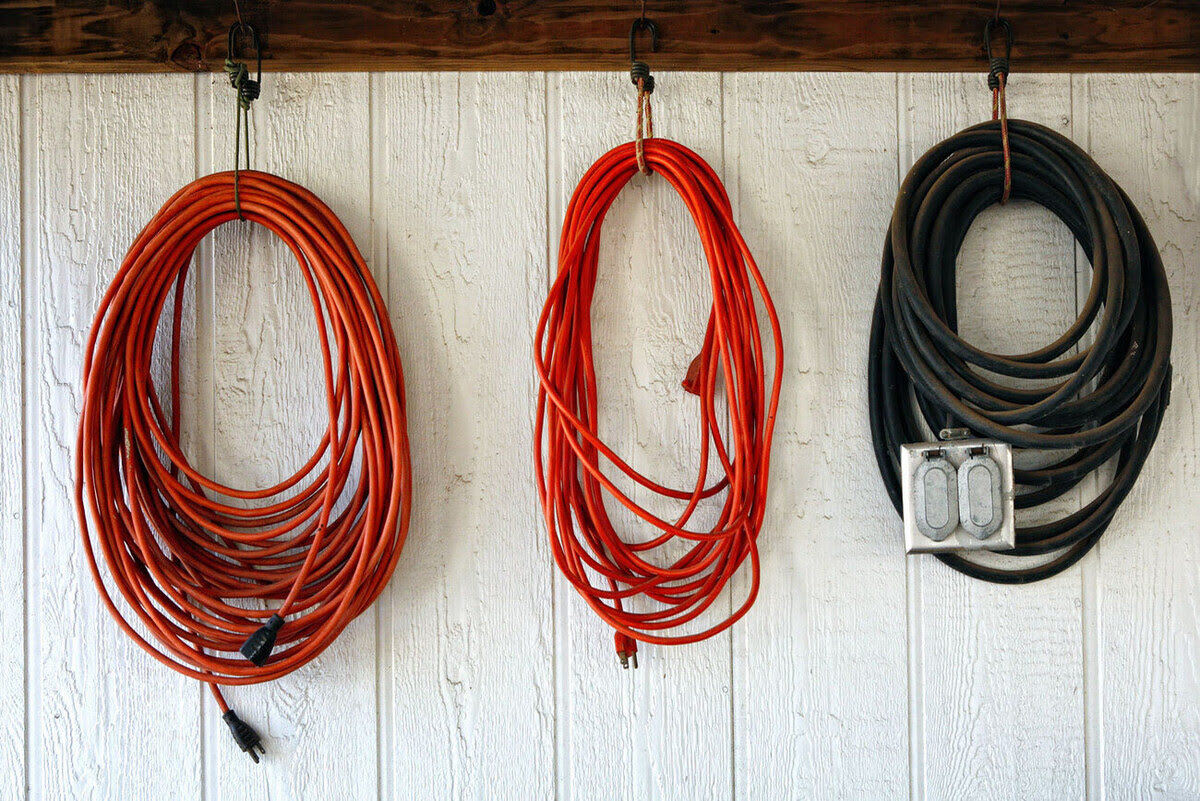
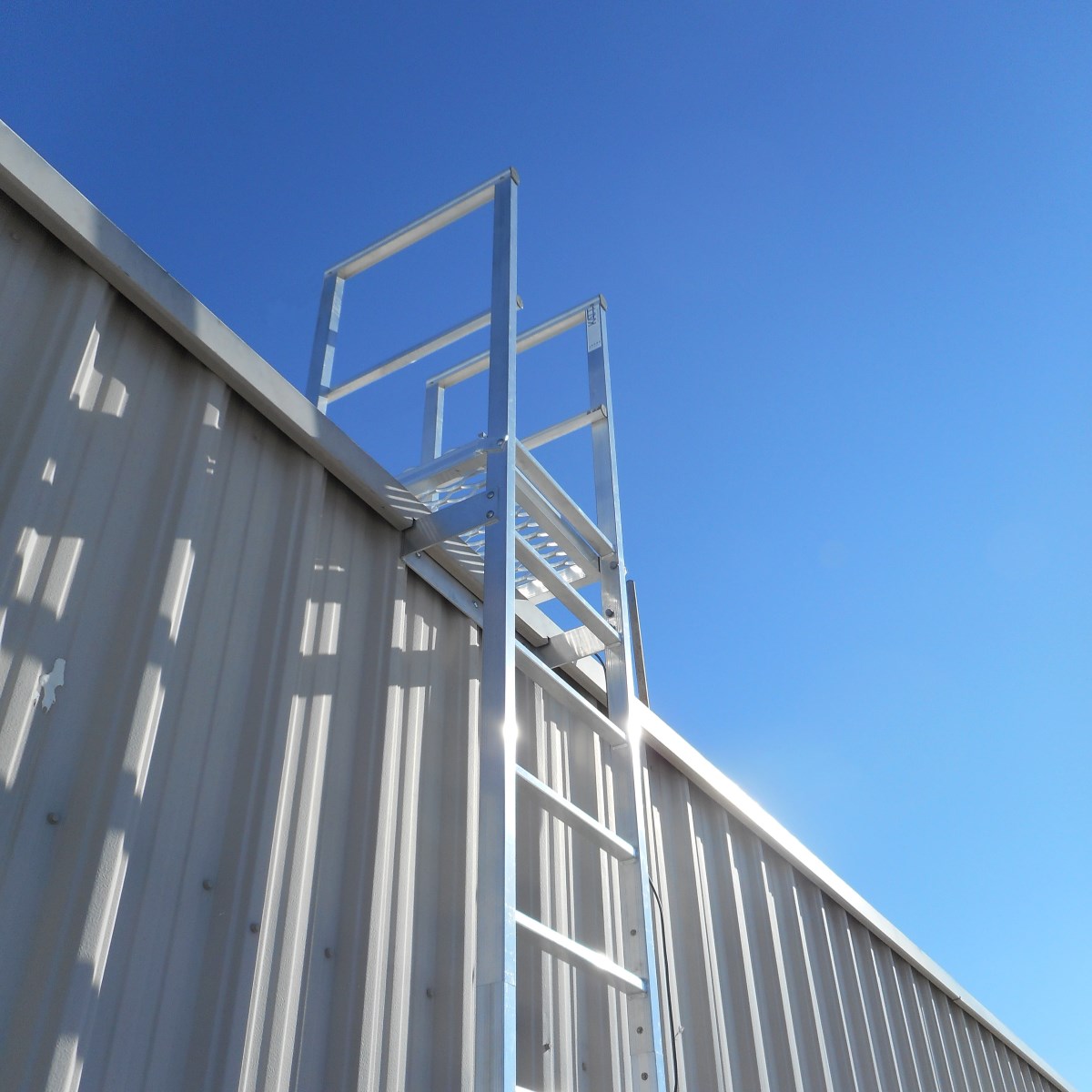
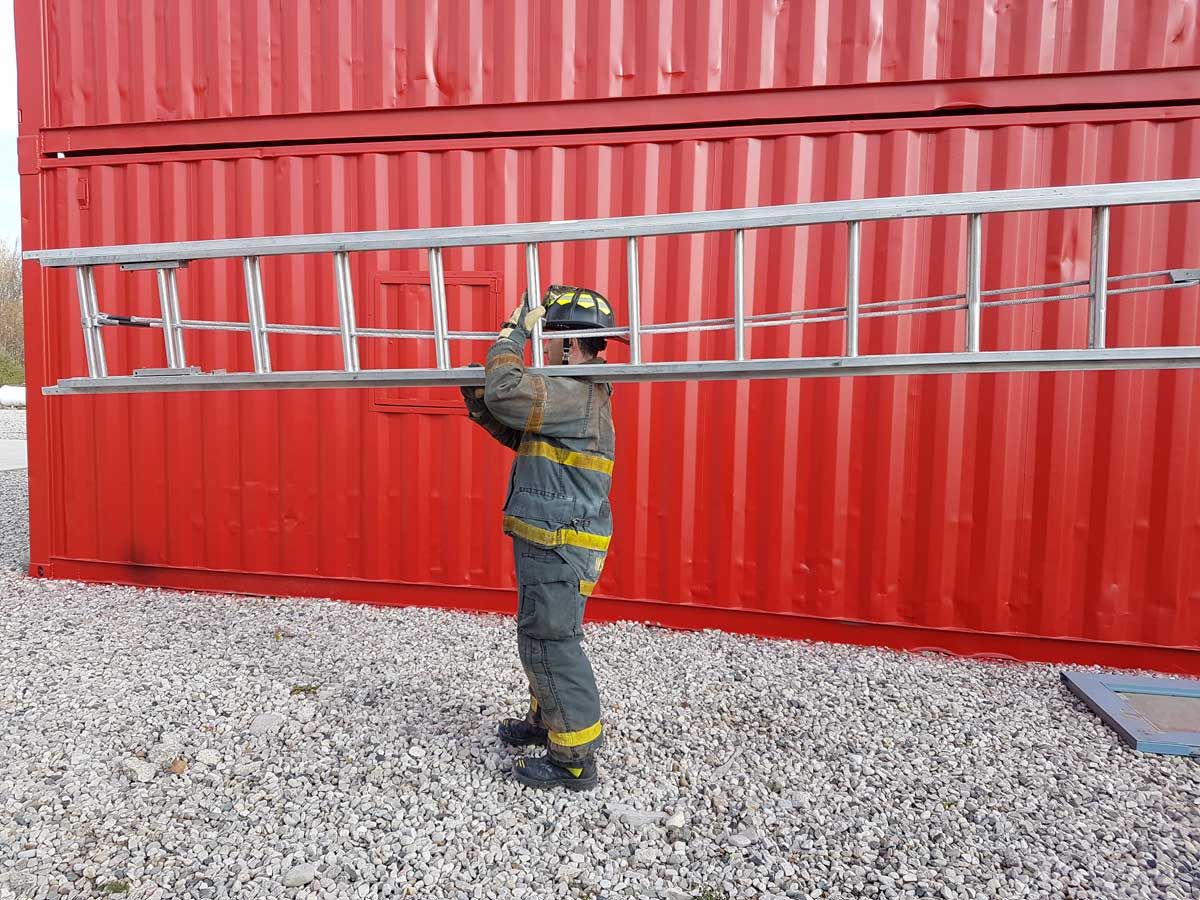

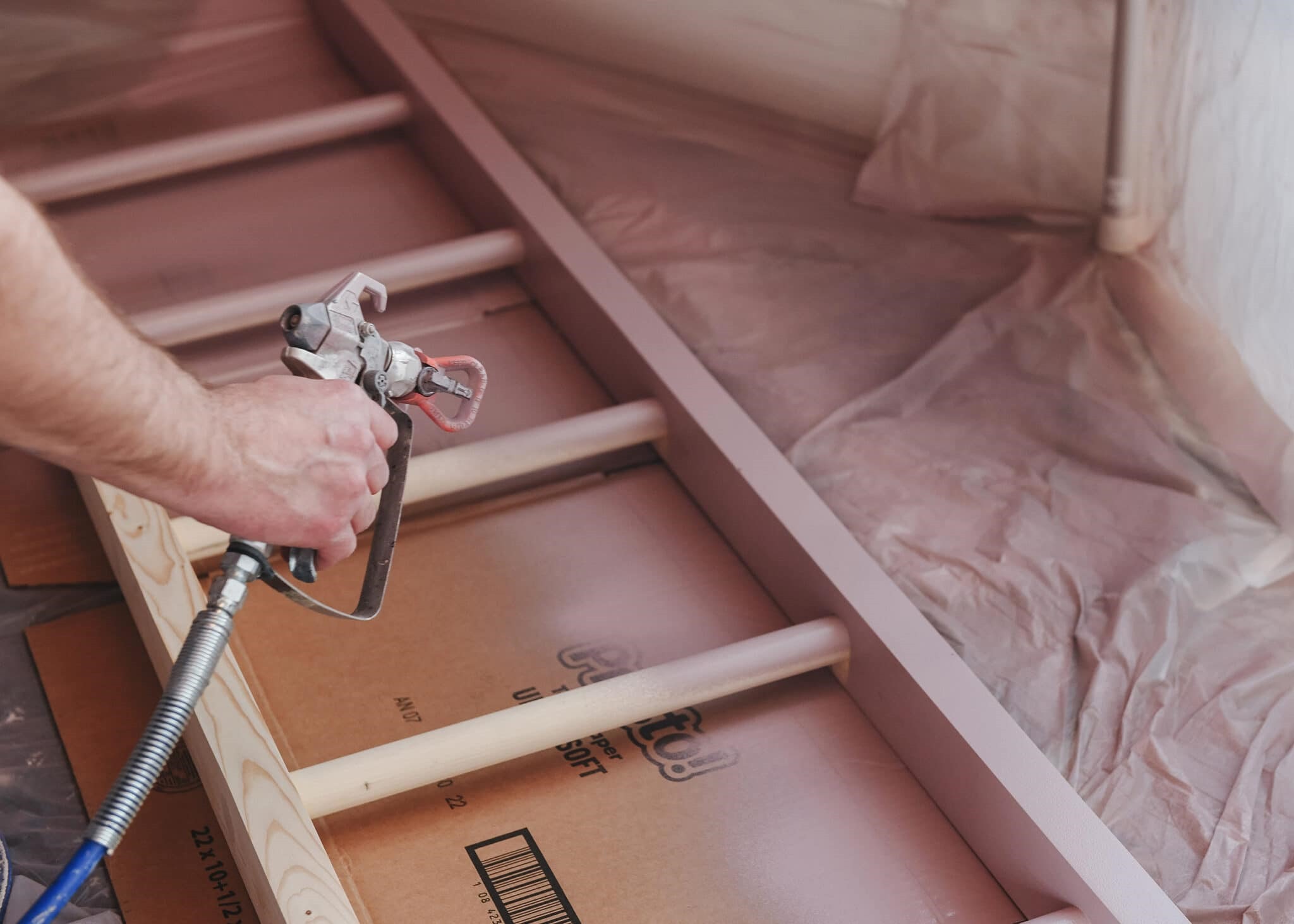
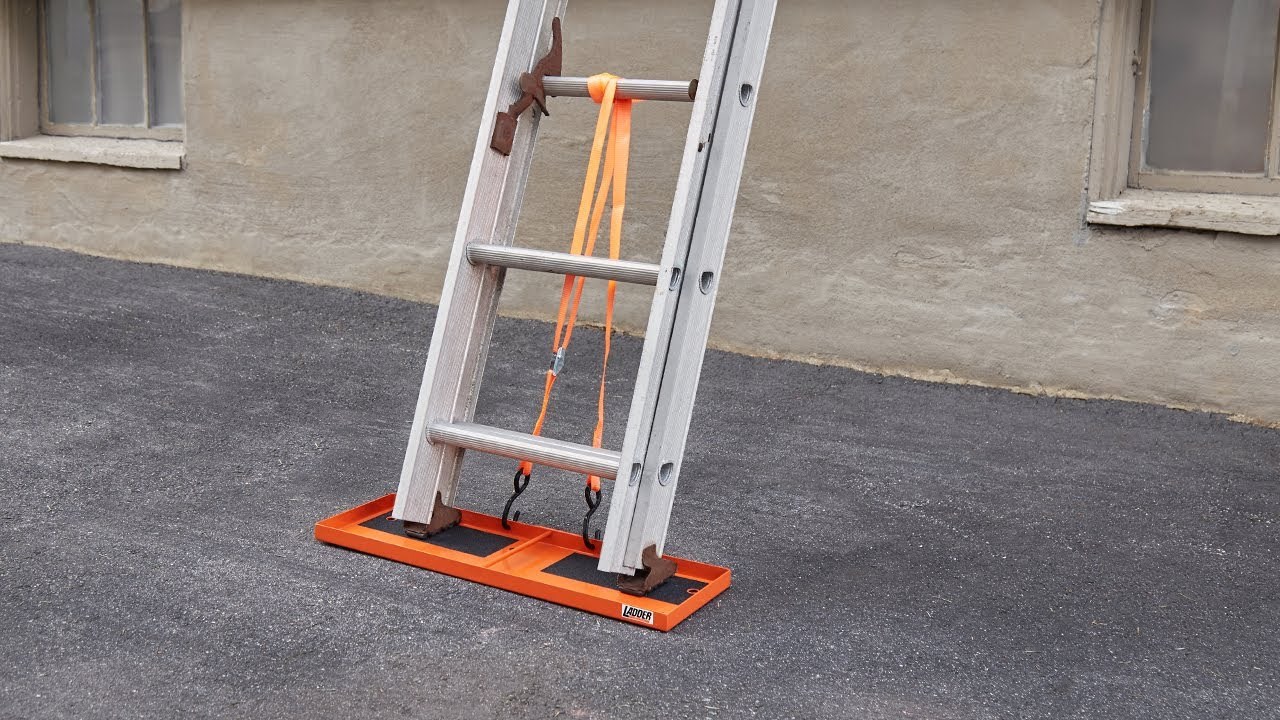
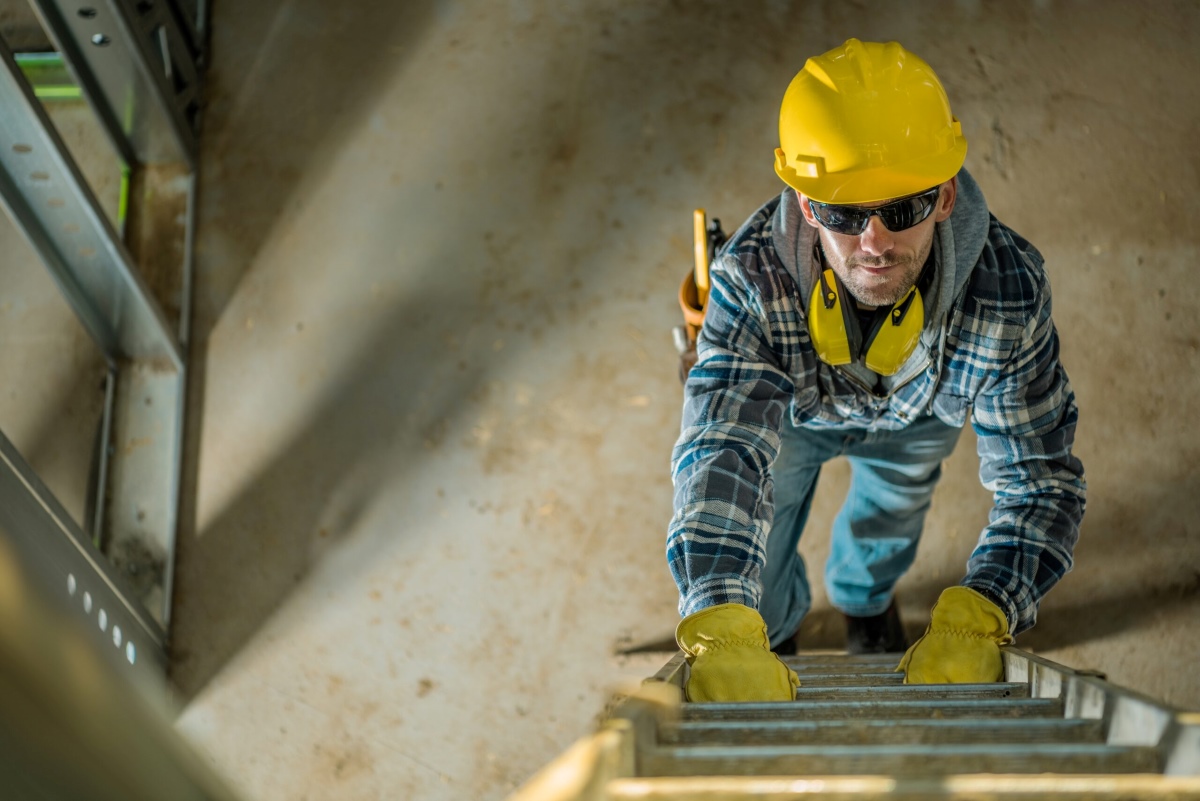

0 thoughts on “How To Store Extension Ladder”